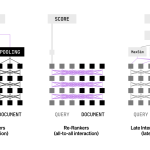Liquid AI Releases LFM2-ColBERT-350M: A New Small Model that brings Late Interaction Retrieval to Multilingual and Cross-Lingual RAG
PositiveArtificial Intelligence

Liquid AI has just launched LFM2-ColBERT-350M, a groundbreaking compact model designed for multilingual and cross-lingual retrieval. This innovative system allows documents to be indexed in one language while enabling queries in multiple languages, all while maintaining high accuracy and fast inference. This advancement is significant as it enhances accessibility and efficiency in information retrieval across diverse languages, making it easier for users worldwide to find relevant content.
— Curated by the World Pulse Now AI Editorial System


